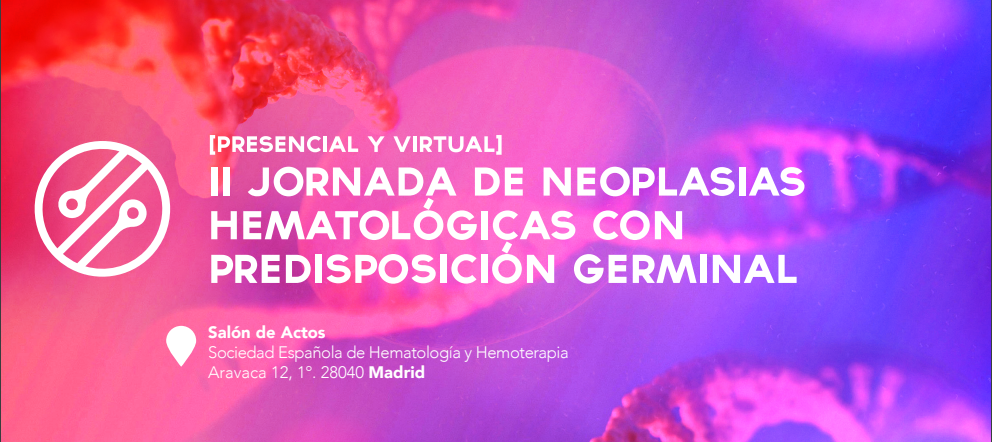SEHH presents the first guideline in Spanish for the diagnosis and treatment of hematological neoplasms with germline predisposition.

The Spanish Society of Hematology and Hemotherapy (SEHH) organized the second conference on hematological neoplasias with germinal predisposition, which was attended by almost 300 people (including face-to-face and virtual). Hematologic neoplasms with germline predisposition are malignant blood diseases that occur in people who, due to the presence of some polymorphism or inherited genetic variation, have a higher risk of developing them. One of the most common is acute myeloblastic leukemia, which is associated with certain abnormalities or variants of certain genes.
“In general, up to 10% of patients with hematological cancer may be carriers of predisposing hereditary mutations (a figure that may vary when considering each type of hematological tumor separately),” comments Andrés Jerez, hematologist at Vall d’Hebron University Hospital, Barcelona. , and one of the day’s coordinators. “And the percentage of cases in which identification of this genetic predisposition influences the clinical management of the patient and family members is increasing.”
The area of germline predisposition to hematologic neoplasias “is new to hematologists, and therefore we have had to go through a process of learning about and recognizing this condition in patient care, as well as recognizing the need to work in a “multidisciplinary medical center.” an environment where it is important to surround yourself with other professionals, such as pediatricians or genetic counselors.”
In this sense, the expert admits that “this type of cancer presents many challenges. “Because they were recently described, many of them require a higher degree of evidence and investigation.” For example, “today, the true incidence of tumors after alloHSCT (commonly known as donor bone marrow transplantation) that appear in the cells of a family donor who is also a carrier of a hereditary predisposition, or the effect of myeloablative therapy in patients who have genes responsible for DNA repair predispose to tumors “, explains Andres Jerez.
Another example of the challenges professionals face is “the lack of specific training on how to offer genetic counseling to the patient and their family members. “The inclusion of genetic counselors in hematology consultations is critical here.”
This is a very active area of hematology research with needs at both the epidemiological and basic level. “At the translational level, I would highlight research projects that focus on the phenomena of clonal hematopoiesis in people with a germinal predisposition. “The fact that they sporadically acquire mutations that attempt (and sometimes successfully) reverse the genetic changes that predispose them to developing a hematologic tumor is a phenomenon that can tell us a lot about how these neoplasms develop and how they treat,” says the doctor. . Sherry emphasizes.
The first guideline on hematological neoplasms with germline predisposition has become a reality
The II Conference on Hematological Neoplasia with Germline Predisposition was the basis for the presentation of the “Guidelines for the diagnosis and clinical treatment of germline predisposition to hematological neoplasia”, “a comprehensive, comprehensive and, above all, useful document that aims to be a reference document.” document in Spanish. On the other hand, since this is a rapidly developing area, it is necessary to create mechanisms for frequent revision and updating of this document,” the expert suggests.
This first guide is the result of two years of intensive work involving 98 authors, including pediatricians, genetic counselors, biologists, bioinformaticians, biomedical ethicists, hematologists, psycho-oncologists and others.
